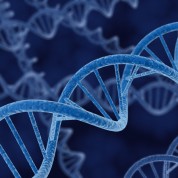
You can find out the following disabilities and chronic illnesses:
- Spinal injuries
- Down syndrome
- Cerebral palsy
- Asperger’s syndrome
Spinal cord injury is permanent, but it doesn’t stop people from leading full and enjoyable lives. You can find out about:
What is a spinal cord injury?
Spinal cord injury occurs if pressure is applied to the spinal cord, and/or if blood and oxygen supply is cut off to the spinal cord. Spinal cord injuries can be caused by disorders and by trauma, such as damage resulting from road accidents, water and sports accidents, and falls. Spinal cord injury is permanent. In addition to causing the loss of the ability to walk, it affects many areas of a person’s body—such as the cardiovascular and respiratory systems, bladder and bowel function, temperature and sensory abilities. Young people are more likely to experience a spinal cord injury, with 42% of people who sustain an injury being between 15 and 30.
Down syndrome Around the world, up to 7 million people are estimated to be living with Down syndrome.
1 in 700 babies is born with Down syndrome, and children, young people and adults with Down syndrome vary in their interests, abilities, personalities and appearance.
Every person that has Down syndrome has a full or partial extra copy of a chromosome—chromosome 21—and they can share other similarities.
Over 100 features have been described in Down syndrome, but generally people with the syndrome have far fewer (often less than 10) of these features.
People with Down syndrome have a higher incidence of respiratory and heart conditions, and may also have intellectual disability to varying degrees. They:
- can have a wide range of skills and interests—and keep learning throughout their lives
- may live independently, or with limited support, as adults.
Most people with Down syndrome are able to read and write.
A person with Down syndrome may experience difficulties with their speaking, but they generally understand more than their speech indicates, and—just like everyone else—value being listened to and appreciated for who they are as a person.
Cerebral palsy
Cerebral palsy is one of the most common congenital (existing before birth or at birth) disorders of childhood. About 500,000 children and adults of all ages in the United States have the condition.
The three types of CP are:
- spastic cerebral palsy — causes stiffness and movement difficulties
- athetoid cerebral palsy — leads to involuntary and uncontrolled movements
- ataxic cerebral palsy — causes a disturbed sense of balance and depth perception
Cerebral palsy affects muscle control and coordination, so even simple movements — like standing still — are difficult. Other vital functions that also involve motor skills and muscles — such as breathing, bladder and bowel control, eating, and learning — may also be affected when a child has CP. Cerebral palsy does not get worse over time.
Asperger’s syndrome
Aspergers is a neuro-developmental disorder that is classified as an autistic spectrum disorder (ASD). Research undertaken by the Australian Advisory Board on Autism Spectrum Disorders shows that there is on average 1 child with an autism spectrum disorder in every 160 children aged 6 to 12 years old.
Not all people that display genius have Aspergers; nor do all people that are diagnosed with Aspergers become recognised as a genius. However, there does seem to be an element of brilliance and creativity in the realm of Aspergers.
As children, people with Aspergers can be considered a ‘walking encyclopedia’ or ‘little professor’ as they are incredibly knowledgeable about a topic that captures their interest. It is this unique ability to delve deeply into a particular area of interest that has been credited with playing a crucial role in bringing about innovation and creativity-often in maths and science, but in many other fields as well.
With ASDs, three main areas of development are affected.
Social interaction:
- don’t develop friendships appropriate to developmental level
- non-verbal behaviour is impaired; e.g. limited eye contact and facial expressions
- ability to identify social cues and conventions is impaired
- don’t spontaneously seek to share enjoyment, interest or achievements with others.
Behaviour:
- develop special interests that are unusual in their intensity and focus
- prefer routine and consistency.
Communication:
- fluent speech although have difficulty with conversation
- misinterpret language; e.g. may take things literally.

